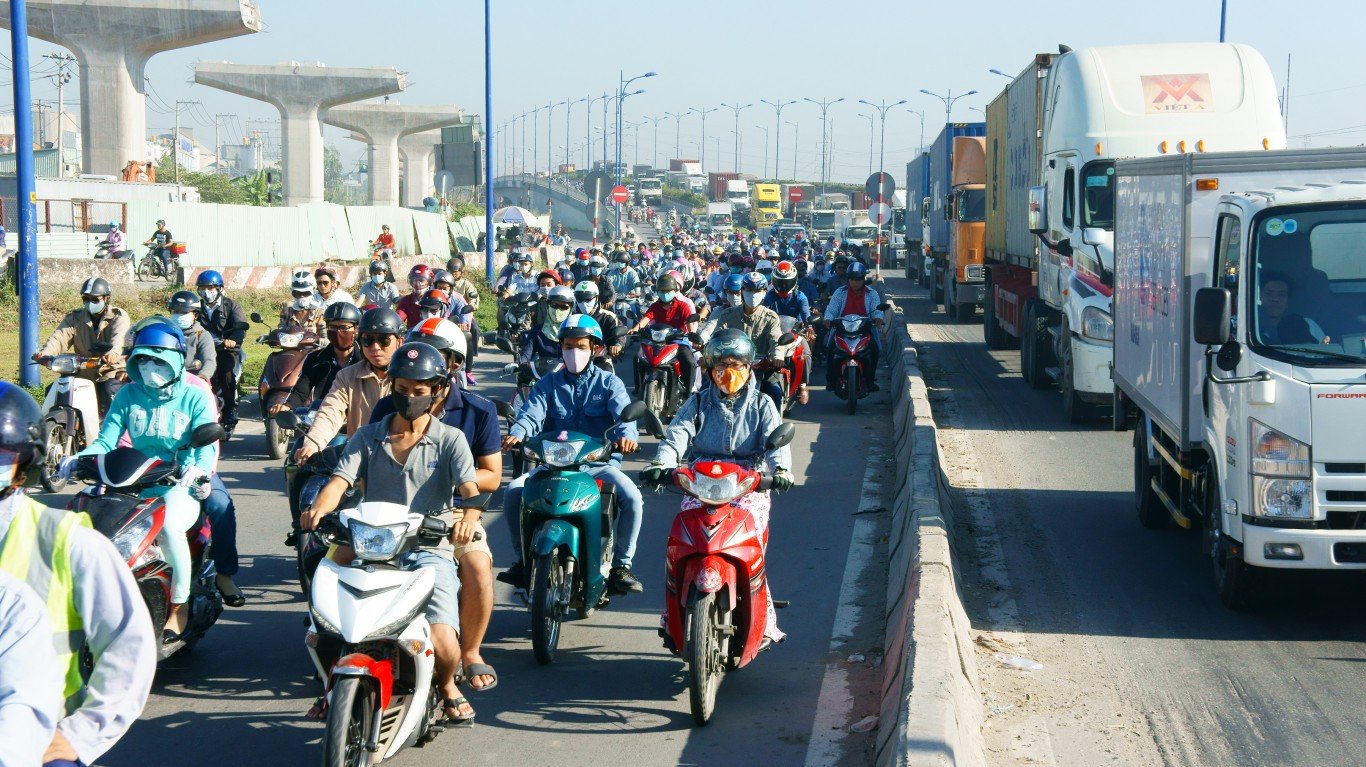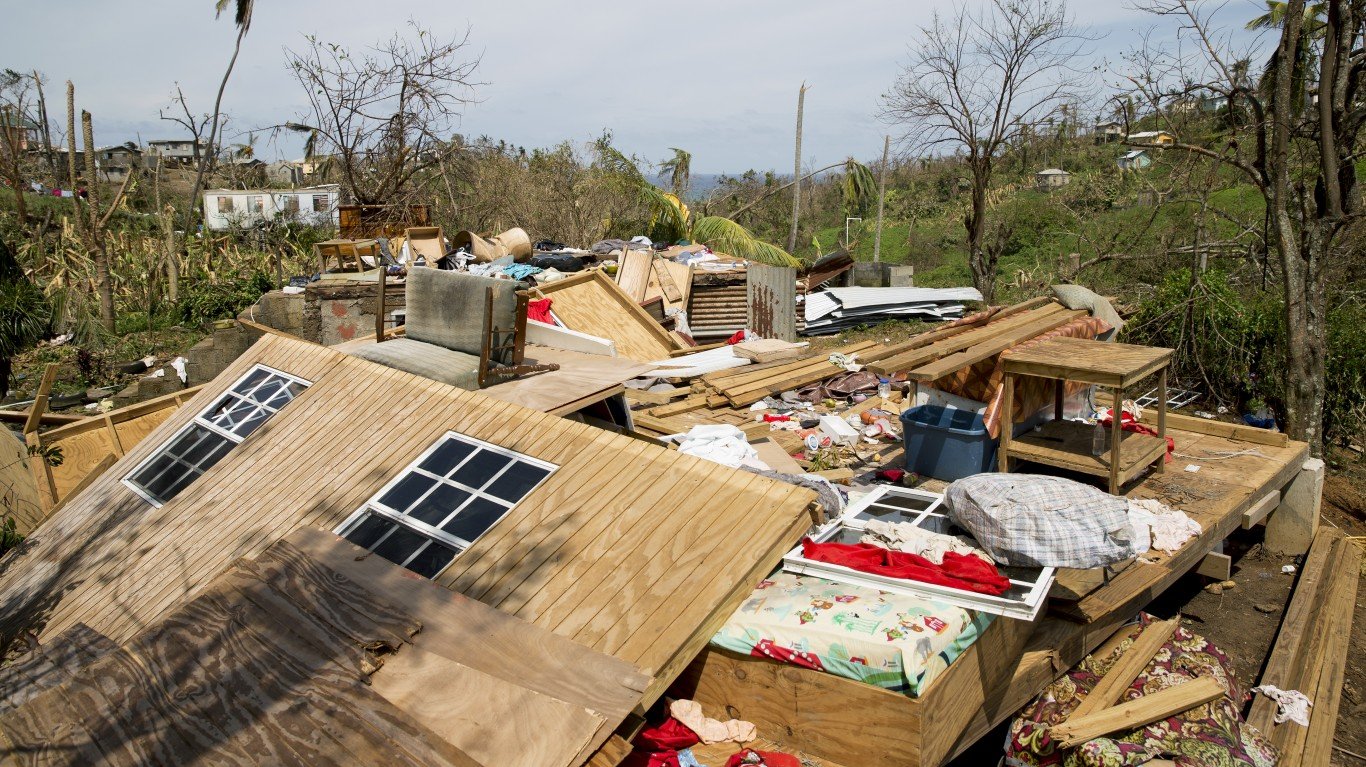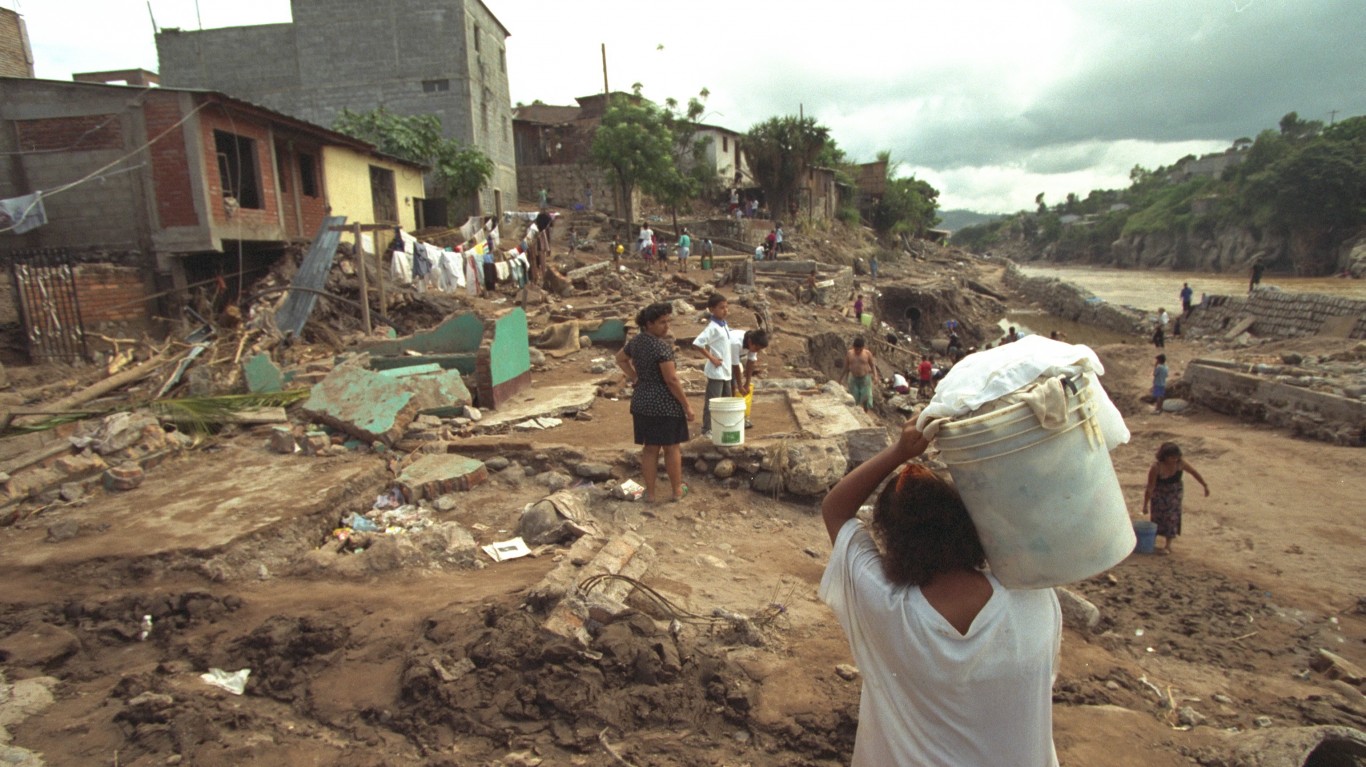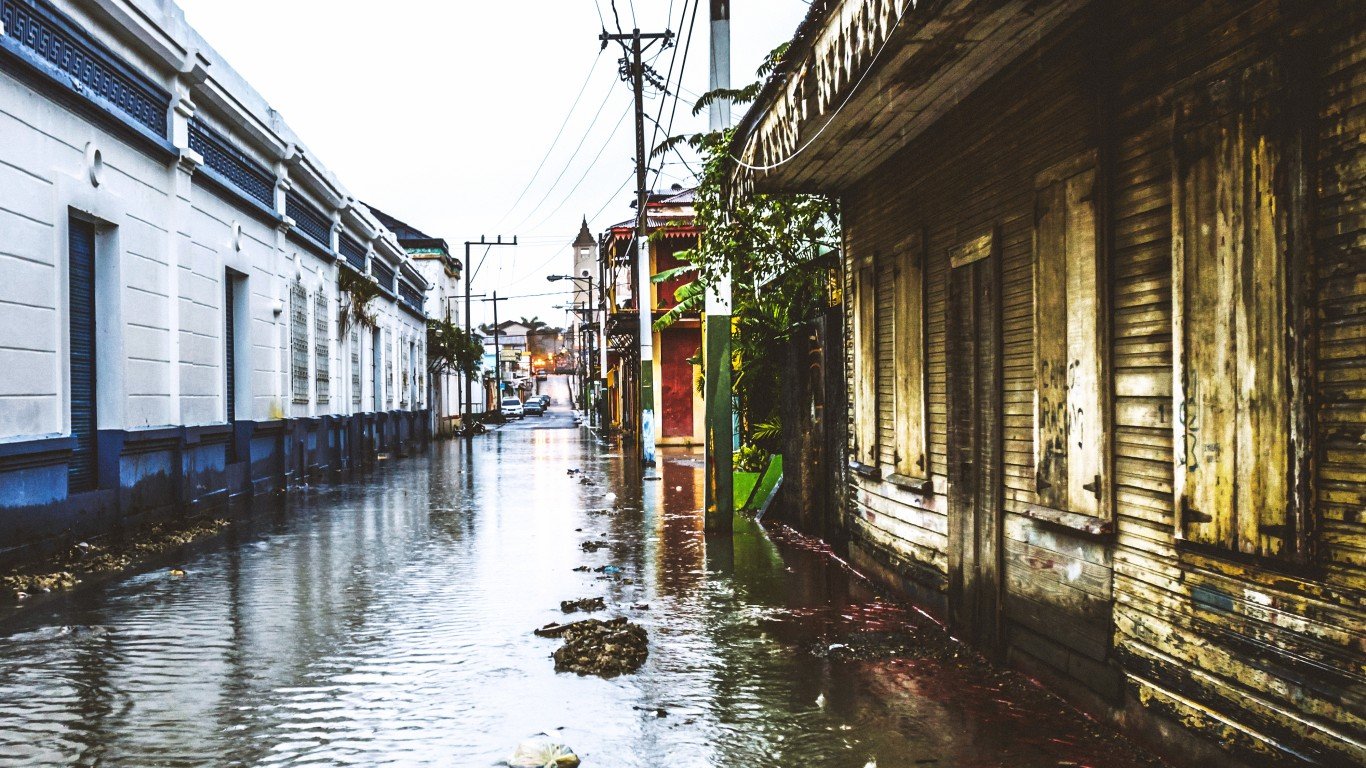
Vietnam
> 2020 CO2 emissions: 321.93 million metric tons
> Share of global emissions: 0.90%
> Population: 97,388,580
Vietnam was listed in the Germanwatch 2020 climate report as one of the 10 countries most affected by climate change in the decades between 1999 and 2018. The Climate Risk Index report for 2019 described the climate-charged weather events that afflicted the country in a single year, 2017. April storms destroyed infrastructure and thousands of houses; in the summer, two tropical storms killed 15 people; in November, a typhoon and the floods that followed killed another 100 people; and before the year ended, Typhoon Damrey destroyed water supplies and damaged 80,000 homes.

Dominica
> 2020 CO2 emissions: 0.15 million metric tons
> Share of global emissions: 0.00%
> Population: 71,990
As storms become more frequent, many countries that have had a respite of many years between storms are being devastated by the increasing frequency and greater strength of storm events. In 2015 and 2017, the tiny Caribbean Country of Dominica was confronted with back-to-back storms that crushed its economy and wiped out most of its homes. Hurricane Erica caused $400 million in damages, the equivalent of 90% of the island’s GNP, and Hurricane Marie destroyed 90% of its housing stock.

Honduras
> 2020 CO2 emissions: 10.63 million metric tons
> Share of global emissions: 0.03%
> Population: 9,904,610
Like many of the world’s poorest countries, Honduras is subject to some of the worst consequences of global warming. Heavily dependent on farming, the country saw 90% of its crops destroyed by Hurricane Mitch in 1998. Over 10,000 people died in the catastrophe, and the country’s progress suffered a severe setback, facing over $3 billion in damages.

Nicaragua
> 2020 CO2 emissions: 5.10 million metric tons
> Share of global emissions: 0.01%
> Population: 6,624,550
According to Germanwatch, Nicaragua was one of the three countries most affected by climate change in the 20 year period between 1992 and 2011, along with Honduras and Myanmar. Since then, the country has continued to be battered by hurricanes and punished with extreme heat, flooding, and droughts. Except for one other year in its history, temperatures in the last two decades have been the highest ever experienced, putting Nicaragua on track for heat that will make the country unlivable by 2070.

Dominican Republic
> 2020 CO2 emissions: 29.09 million metric tons
> Share of global emissions: 0.08%
> Population: 10,847,900
With increasingly regular assaults from storms, flooding, and drought, the Dominican Republic averages 52 deaths a year from climate-related weather events. Flooding has been the most serious threat. Though the Caribbean islands are famously pummeled by hurricanes, the tourist industry is able to tout that the Dominican Republic is usually spared from major hurricane damage.






